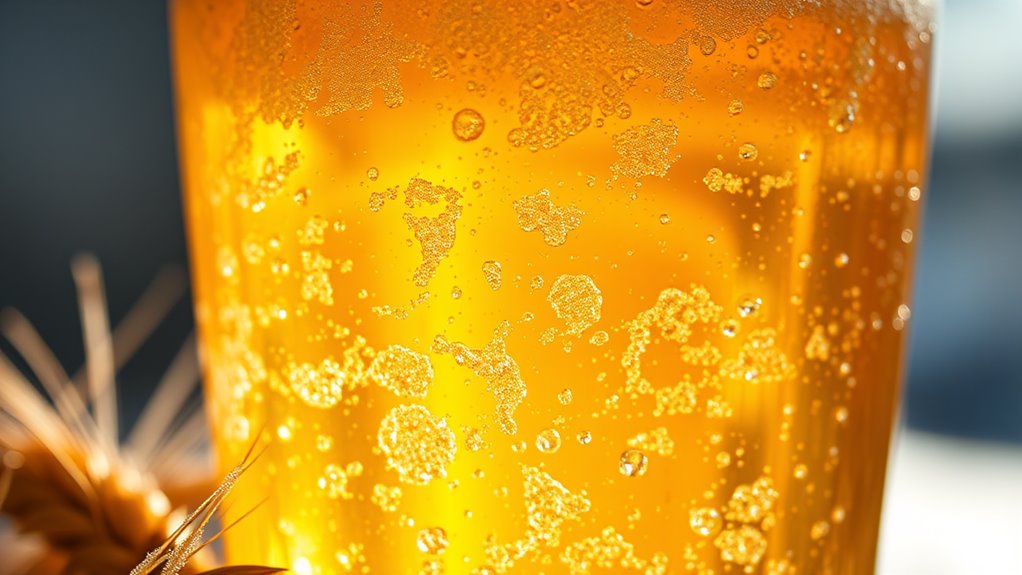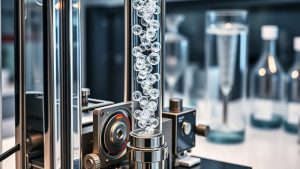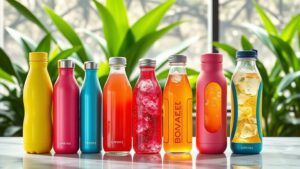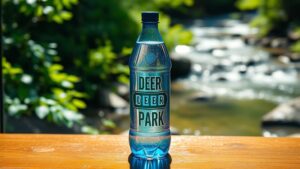What Makes Beer Carbonated?
Learn how carbonation transforms beer’s flavor and mouthfeel, and uncover the secrets behind achieving the perfect bubbly brew.

Beer gets its carbonation mainly from dissolved carbon dioxide (CO2), produced during fermentation or injected under pressure. The fermentation process creates carbonic acid, which enhances flavor and mouthfeel. You can achieve carbonation naturally by allowing yeast to consume sugar, or you can use forced carbonation for quick results. Maintaining proper CO2 levels is essential, as it affects the beer's sensory experience. Stick around, and you'll discover more about the intricate balance of carbonation and beer quality.
When you crack open a cold beer, the delightful fizz you experience is a result of carbonation, an important process that transforms simple ingredients into an invigorating beverage. Carbonation occurs when carbon dioxide (CO2) dissolves in the liquid under pressure, forming carbonic acid, which greatly influences the beer's flavor and mouthfeel.
Two primary methods of carbonation exist: natural and forced carbonation. Natural carbonation happens during fermentation when yeast consumes sugar, producing CO2 as a byproduct. This method can also be employed in bottles by adding a small amount of sugar, triggering secondary fermentation that generates additional CO2.
Natural and forced carbonation are key methods that enhance beer's flavor and effervescence through CO2 production during fermentation.
Forced carbonation, on the other hand, involves pumping CO2 directly into a sealed container of beer. This technique allows you to achieve the desired carbonation levels quickly and efficiently. Typically, the carbonation levels in beer range from 1.2 to 2.8 volumes per volume of beer (v/v), depending on the beer style. For example, stouts usually have lower carbonation compared to more effervescent ales.
No matter the method, maintaining the right CO2 levels is essential; the interaction between pressure and temperature plays an important role in keeping CO2 dissolved in the beer. Pressure is required to keep carbon dioxide dissolved in the liquid, and improper handling could lead to loss of carbonation.
As you pour your beer into a glass, you'll notice that nucleation sites—tiny imperfections or particles—facilitate the formation of bubbles. This process enhances the visual and sensory aspects of carbonation, making the experience more enjoyable. Proper sealing of bottles or kegs is important to prevent CO2 from escaping, ensuring that the beer retains its intended carbonation level.
If stored correctly in a cool, dark place, you can preserve the carbonation, extending the beer's shelf life and preventing spoilage.
The importance of carbonation goes beyond mere aesthetics. It adds a rejuvenating quality to beer, enriching the overall drinking experience. The foam, or "head," produced by carbonation impacts not only the beer's appearance but also its texture.
Additionally, achieving the correct carbonation levels is essential for different beer styles, as over or under-carbonation can compromise quality and appeal. For instance, a beer with insufficient carbonation may taste flat, while one that's over-carbonated can feel harsh on the palate.
Several factors influence carbonation, including temperature and pressure. Colder temperatures enhance the beer's ability to absorb CO2, while different types of beer require varying pressure levels to maintain carbonation. The fermentation vessel and conditions also play a considerable role in determining natural carbonation levels.
For homebrewers, natural carbonation methods like bottle conditioning are common for small batches, while forced carbonation offers quicker results with keg systems.
Ultimately, CO2 is more than just a contributor to bubbles; it enriches the sensory experience of beer. It adds fullness to the body, enhances flavors, and inhibits bacterial growth, preserving the beer's integrity.
Conclusion
At its core, carbonation is the effervescent heart of beer, a dance of carbon dioxide that tickles your palate. Whether it's through natural fermentation or forced injection, that lively fizz transforms each sip into a celebration of flavor. As you savor the brew, remember that carbonation not only enhances aroma and mouthfeel but also elevates the overall experience. So, next time you raise a glass, appreciate the science and artistry behind the bubbles that bring your beer to life.








